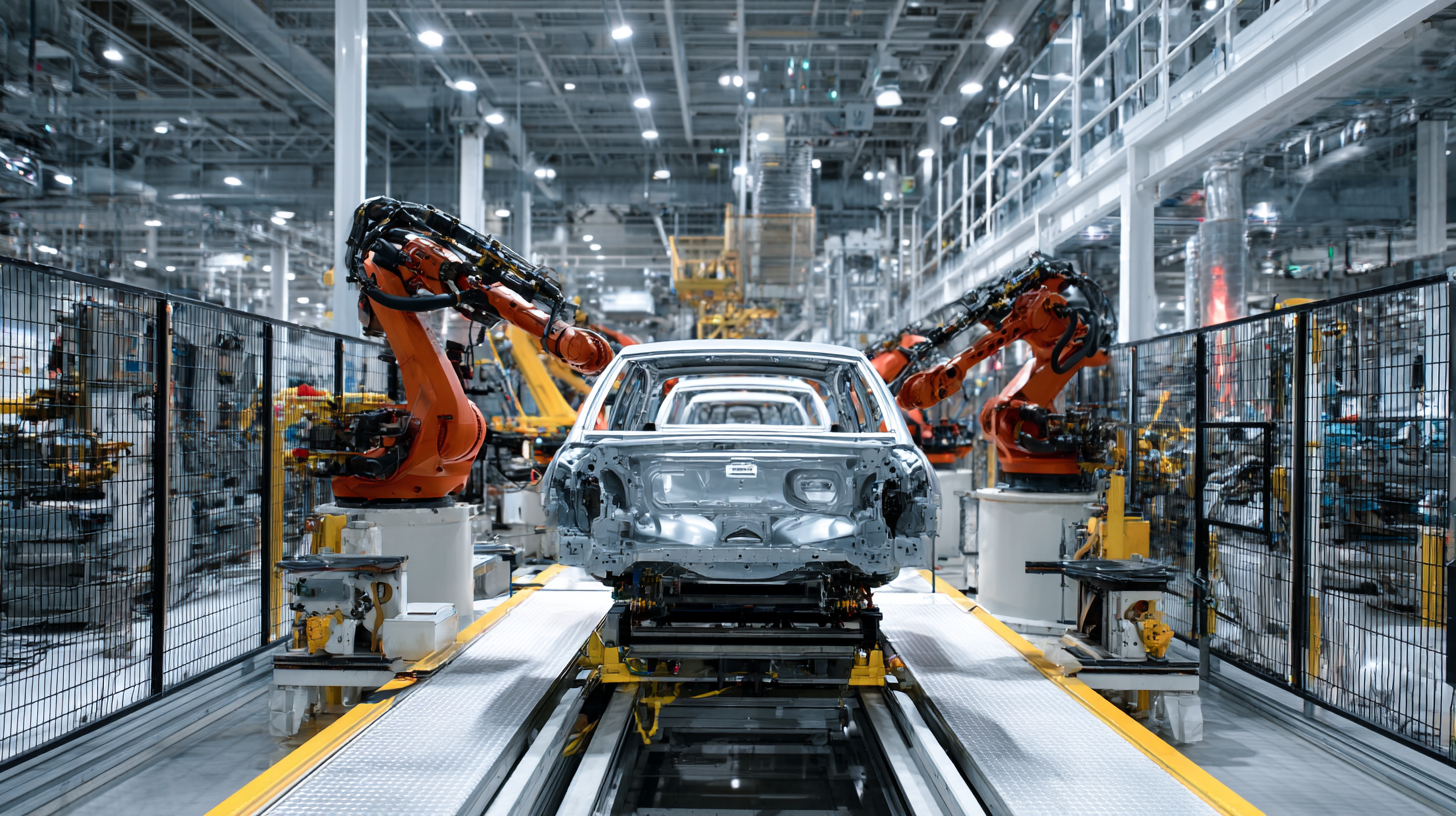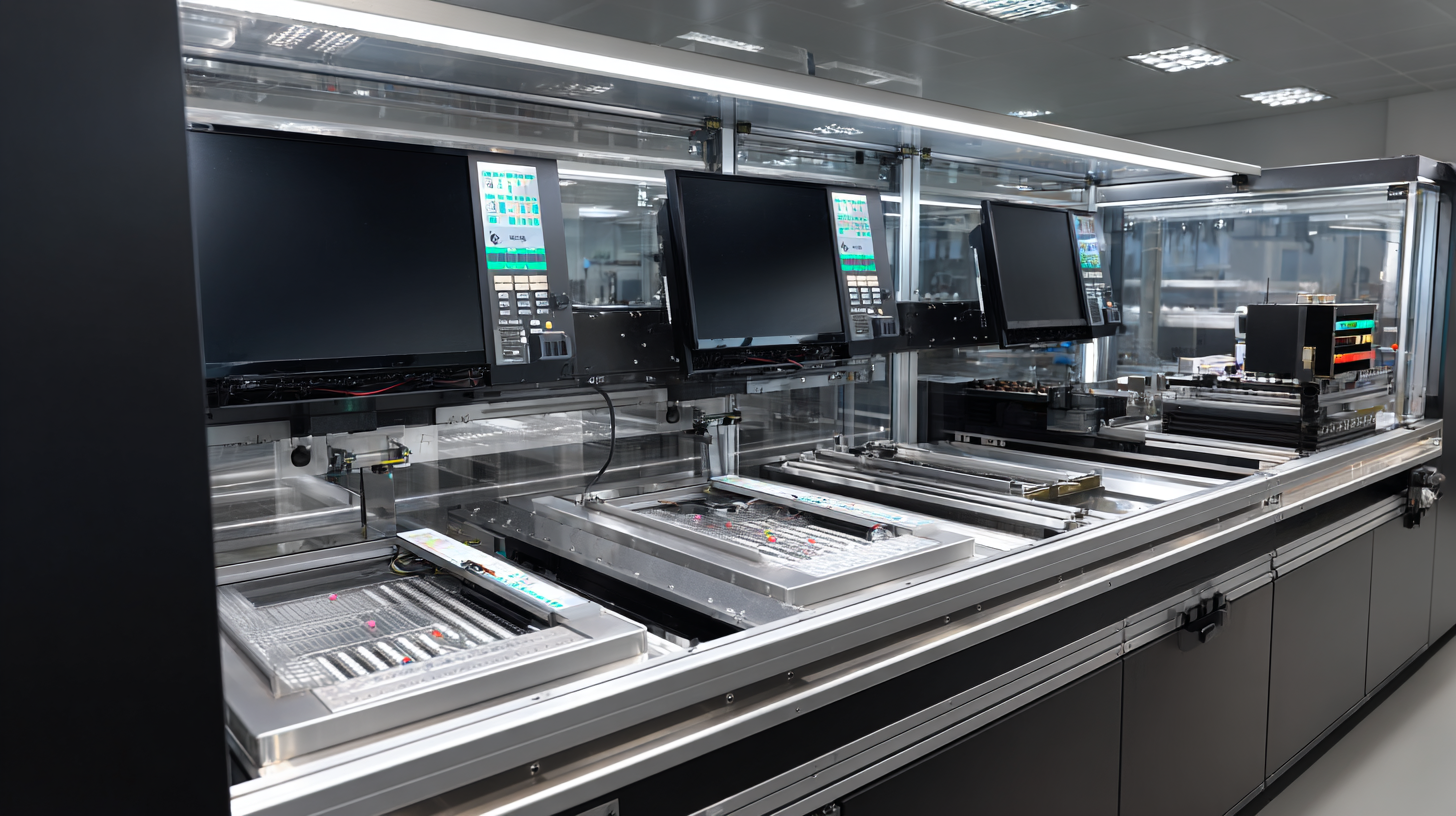Leave Your Message
-
Phone
-
E-mail
-
Whatsapp
In the fast-evolving landscape of modern manufacturing, the integration of advanced technologies has become paramount in enhancing operational efficiency and precision. Among these innovations, Automated Cutting Solutions stand out as a pivotal force, transforming how industries approach production processes. As highlighted by industry expert Dr. Jane Thompson, a leading figure in automated manufacturing technologies, "Automated Cutting Solutions not only streamline production but also significantly reduce material waste, paving the way for a more sustainable future."

The push towards automation in manufacturing is not merely a trend; it represents a fundamental shift towards smarter, more efficient operational practices. Automated Cutting Solutions leverage cutting-edge technologies such as computer numerical control (CNC) and robotics, enabling manufacturers to achieve unprecedented levels of accuracy and consistency. This evolution is crucial in sectors ranging from textiles to aerospace, where precision and efficiency are vital for competitiveness.
As companies increasingly prioritize lean manufacturing and sustainability, the role of Automated Cutting Solutions is becoming more pronounced. By adopting these technologies, businesses can not only enhance their productivity but also contribute to a more sustainable manufacturing ecosystem. As we delve deeper into the implications and advantages of these solutions, the transformative potential they hold for the future of manufacturing becomes increasingly evident.
Automated cutting solutions are revolutionizing the manufacturing landscape by significantly enhancing operational efficiency. According to a report by MarketsandMarkets, the global market for automated cutting technology is projected to reach $3.2 billion by 2024, reflecting a compound annual growth rate (CAGR) of 6.8%. This growth underscores the increasing reliance on advanced automation in streamlining manufacturing processes. Automated cutting machines reduce material waste by up to 30%, thereby maximizing resource utilization and minimizing costs—a crucial advantage in competitive markets.
Furthermore, the implementation of automated cutting solutions can lead to a significant reduction in production timelines. A study by the International Journal of Production Research highlights that manufacturers utilizing automated cutting technologies can achieve a 20-40% increase in throughput. This efficiency gain allows companies to respond more rapidly to market demands, facilitating just-in-time production strategies. As manufacturers continue to adopt these cutting-edge solutions, the impact on overall productivity, cost-effectiveness, and speed to market will be profoundly transformative, positioning them for long-term success in an increasingly automated future.
 In the modern manufacturing landscape, automation in cutting processes has emerged as a vital area for improvement, offering significant cost savings and efficiency gains. Recent statistics reveal that automating cutting workflows can reduce operational costs by up to 30%. This remarkable reduction can be attributed to minimized wastage, faster turnaround times, and reduced labor costs. As manufacturing industries increasingly recognize the advantages of automation, integrating advanced cutting solutions becomes essential for maintaining a competitive edge.
In the modern manufacturing landscape, automation in cutting processes has emerged as a vital area for improvement, offering significant cost savings and efficiency gains. Recent statistics reveal that automating cutting workflows can reduce operational costs by up to 30%. This remarkable reduction can be attributed to minimized wastage, faster turnaround times, and reduced labor costs. As manufacturing industries increasingly recognize the advantages of automation, integrating advanced cutting solutions becomes essential for maintaining a competitive edge.
To maximize these benefits, companies should consider implementing automated cutting systems that are tailored to their specific needs. An essential tip is to conduct a thorough assessment of existing cutting processes to identify areas of inefficiency. This evaluation can guide the selection of technology that best addresses operational challenges and enhances production quality. Additionally, leveraging data analytics from cutting machines can help optimize material usage, further driving down costs and improving sustainability.
Training staff to effectively operate and maintain automated cutting machines is crucial as well. Investing in employee development not only boosts productivity but also ensures a seamless transition to new technologies. By aligning automation goals with workforce capabilities, manufacturers can achieve a smoother implementation process and fully realize the potential of cutting-edge automation solutions.
The manufacturing landscape is undergoing a significant transformation as automated cutting solutions increasingly replace traditional methods. A comparative analysis reveals that while conventional cutting techniques often rely on manual precision and extensive labor, automated solutions leverage advanced technologies like laser and ultrasonic cutting. These innovations not only enhance efficiency but also promote sustainability in production processes, especially within industries like leather manufacturing, which faces increasing pressure to reduce environmental impact.
In a recent report, it was noted that automated solutions can significantly reduce waste, with laser-assisted cutting techniques demonstrating a lower environmental footprint compared to traditional blade cutting. This shift is paramount, as the leather industry grapples with the need for greener practices. Moreover, integrating AI in manufacturing has proven to increase operational efficiency by processing vast amounts of data in real-time, leading to more informed decision-making and better resource allocation.
**Tip:** Embracing automated cutting solutions can lead not only to cost savings but also to a substantial reduction in production time. Look for technologies that provide data analytics capabilities to optimize cutting patterns and minimize material waste.
**Tip:** When transitioning to automation, consider training programs for existing staff to ensure a smooth integration of new technologies, enhancing both productivity and safety on the production floor.
The integration of advanced technologies like AI and machine learning into automated cutting systems is transforming the manufacturing landscape. These cutting-edge solutions not only optimize production efficiency but also enhance precision, reducing material waste and minimizing errors. By leveraging AI algorithms, manufacturers can analyze vast amounts of data in real-time, enabling them to make smarter decisions that lead to improved workflows and ultimately, higher quality products.
**Tips:** When considering an automated cutting solution, assess the specific needs of your production process. This includes evaluating the types of materials you work with and the complexity of the designs. Additionally, ensure that the chosen system can be easily integrated with existing technologies to maximize efficiency.
Moreover, continuous improvement is crucial in this rapidly evolving field. Utilizing machine learning allows systems to adapt and refine their cutting techniques over time, leading to ongoing enhancements in productivity and efficiency. Organizations willing to invest in training their workforce on these advanced systems will discover significant long-term benefits as their teams harness the full potential of these technologies.
**Tips:** Regularly update your systems and stay informed about new advancements in AI and machine learning applications. This proactive approach will keep your manufacturing processes competitive in an ever-changing market.
| Technology | Description | Efficiency Improvement (%) | Integration Time (weeks) |
|---|---|---|---|
| AI-Driven Cutting Algorithms | Utilizing AI to optimize cutting paths for precision and material savings. | 30% | 6 |
| Machine Learning for Predictive Maintenance | Using machine learning techniques to predict equipment failures before they occur. | 25% | 8 |
| Automated Quality Control Systems | Integration of automated inspection systems to ensure consistent quality. | 20% | 4 |
| Robotics in Material Handling | Deploying robotic systems for efficient handling and feeding of materials. | 35% | 10 |
In today’s competitive manufacturing landscape, companies are increasingly turning to automated cutting solutions to enhance productivity and efficiency. Real-world case studies reveal that businesses implementing these cutting-edge technologies experience significant improvements in their operational workflows. For instance, a recent study highlighted a manufacturing firm that integrated automated cutting machinery, resulting in a remarkable 30% decrease in processing time and a 20% reduction in material waste. This not only accelerated their output but also contributed to substantial cost savings.
**Tips**: When considering automation, assess your specific needs and existing processes. Conduct a thorough evaluation of your production requirements and identify areas where automation can provide the most benefit. Additionally, ensure that your workforce is adequately trained to work alongside advanced technologies, maximizing the potential of these new systems.

